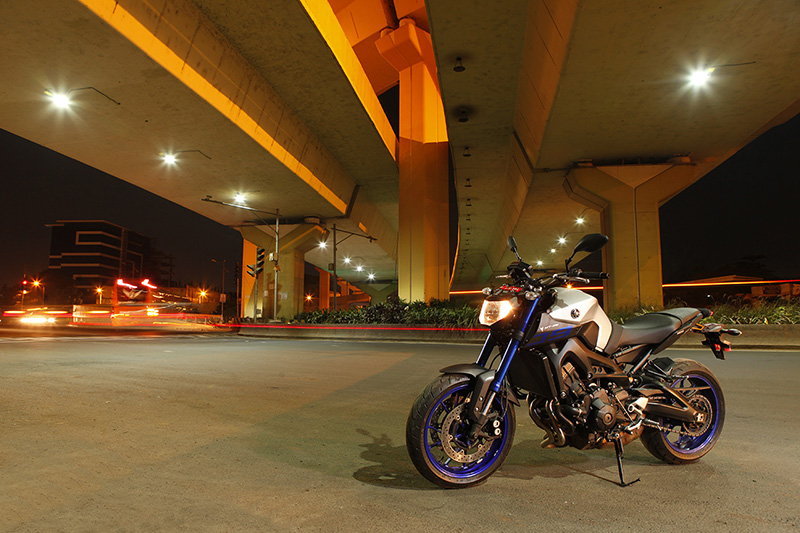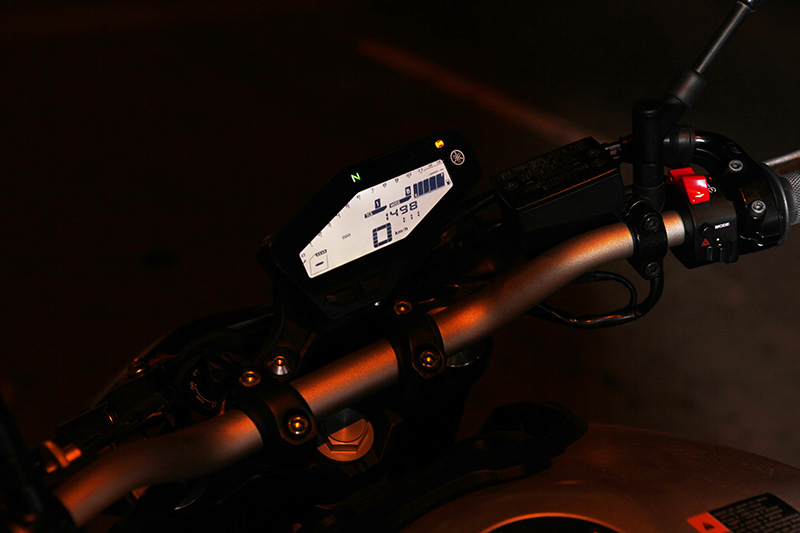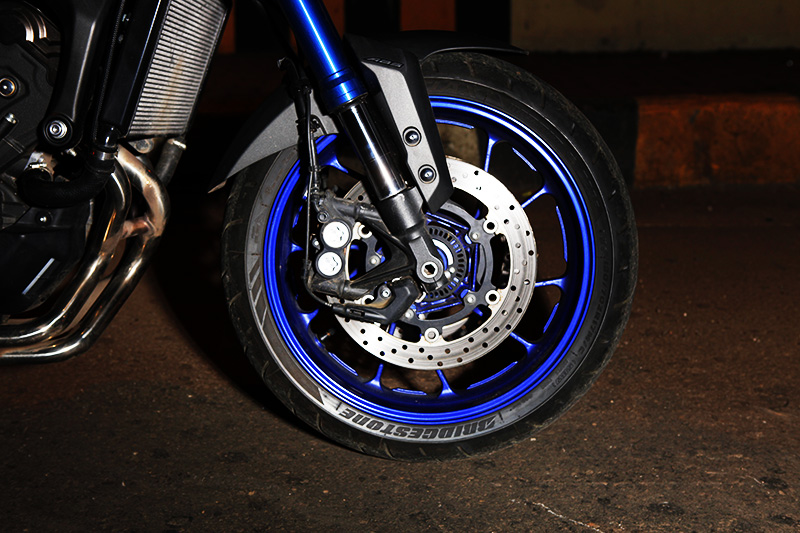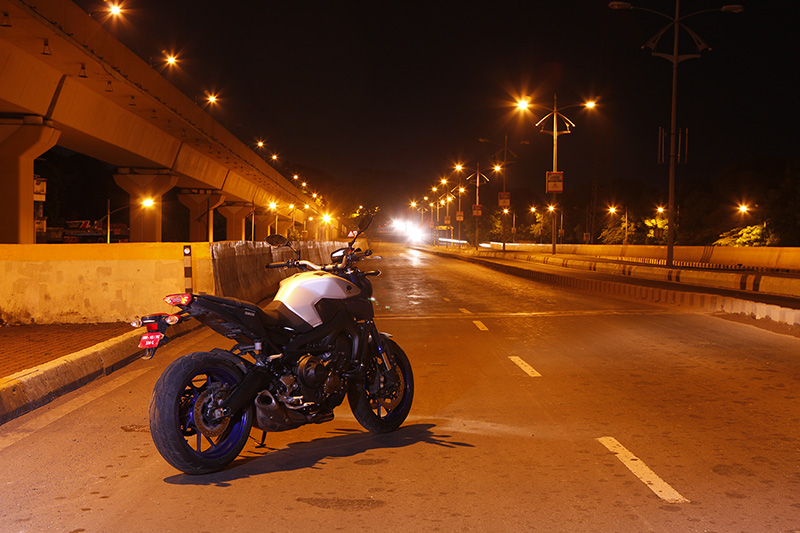
When you get on to the bike, it feels surprisingly compact for a 900, thanks to the excellent weight distribution. Helping this is the extremely curvaceous fuel-tank and shapely seat. The seat itself is fairly low (815 mm), flat and with just about enough space for a diminutive pillion. The rider sits comfortably upright, while the wide handlebar adds to the confidence. However, the foot-pegs feel slightly more rear-set than expected in a street bike. This is probably to accommodate the triple-cylinder engine and stacked transmission that have been designed to be as compact as possible.
A small issue was the protruding clutch casing which comes into contact with the right leg while crawling. Yamaha say that the MT-09 is 54 mm narrower than the four-cylinder Yamaha FZ-8, and with a kerb weight of 171 kg, it’s one of the lightest in its class with just the Triumph Street Triple S being lighter still.
No wonder it feels like a much smaller capacity bike on the go. The three-pot motor is one of its biggest assets. This makes it light and nimble and, thanks to the three riding modes, makes it multifaceted as well. The modes can be easily accessed via a button on the right switchgear, and the selected mode is displayed on the digital information console. ‘STD’ is the standard mode wherein the 115 PS is delivered in a linear but peppy manner, making it suitable for regular riding. This is the best mode for city use, for the MT remains fairly quick to react and has controlled power which is enough for overtaking slower traffic.

The ‘B’ mode detunes the output by about four PS, and the bike feels more subdued and is ideal for novice riders. There’s a slight lag when the throttle is opened and the power flow is relaxed throughout the rev-band. It felt a little too soft for my liking but I could resort to it while riding back from work after a tiring day.
The ‘A’ setting is the craziest mode, making the bike menacingly sharp. The slightest throttle input unleashes all the 115 horses, propelling the bike towards the horizon. This mode pokes you to ride harder and the experience is so intoxicating that you’re happy to oblige. Stick to this mode and the 0-100 km/h claimed time of about four seconds doesn’t seem too far-fetched. Apart from this, one can select either of the two levels for traction control and there’s the option to switch it off completely if you’re feeling too adventurous.
Deploying the crossplane engine technology, the triple churns out a hefty torque and good traction. No matter which mode you select, the flat flow of the 87.5 Nm of torque makes it extremely easy to ride within the city. Aiding the rideability are the close gear ratios of the six-speed gearbox which ensure that the gear shifts are bare minimum even in congested traffic.

The firm suspension setup also aids handling, as I could cut through traffic as if I were riding a sub-500-cc motorcycle. The front gets a set of 41-mm adjustable upside down (USD) forks, while at the rear a monoshock is linked to the swingarm. This, in combination with the light and rigid aluminium frame and a short swingarm, gives the bike the desired stiffness and balance. The suspension also offers a long travel (front 137 mm, rear 130 mm) which helps it tackle the worst of roads.
Thus, you can be brave while hitting the apex and while negotiating a series of bends. Yamaha say that they also worked on the ground clearance and have given the MT-09 a 51-degree lean angle, which is as good as that in some super-sports. Supporting this sporty character is a set of very capable brakes equipped with new-generation ABS. It comes with twin 298-mm discs at the front with four-pot calipers and a 245-mm disc at the rear. Even a gentle tap on the adjustable front brake lever is enough to shed speed rapidly.
There’s not much I can complain about in the MT-09. It’s a pretty well-rounded bike, perfect to have some fun around town. Preferably once everyone else is asleep, so that it can showcase its heady darker side. The one big hitch is its price. This Yamaha is the most expensive bike in its segment, since it’s brought to India via the completely built-up (CBU) route. At Rs 10.35 lakh (ex-showroom) it costs a couple of lakh of rupees more than the competition. Because of which, I like everything about the bike except its premium price.
Story: Sarmad Kadiri
Photography: Sanjay Raikar



Leave a Reply